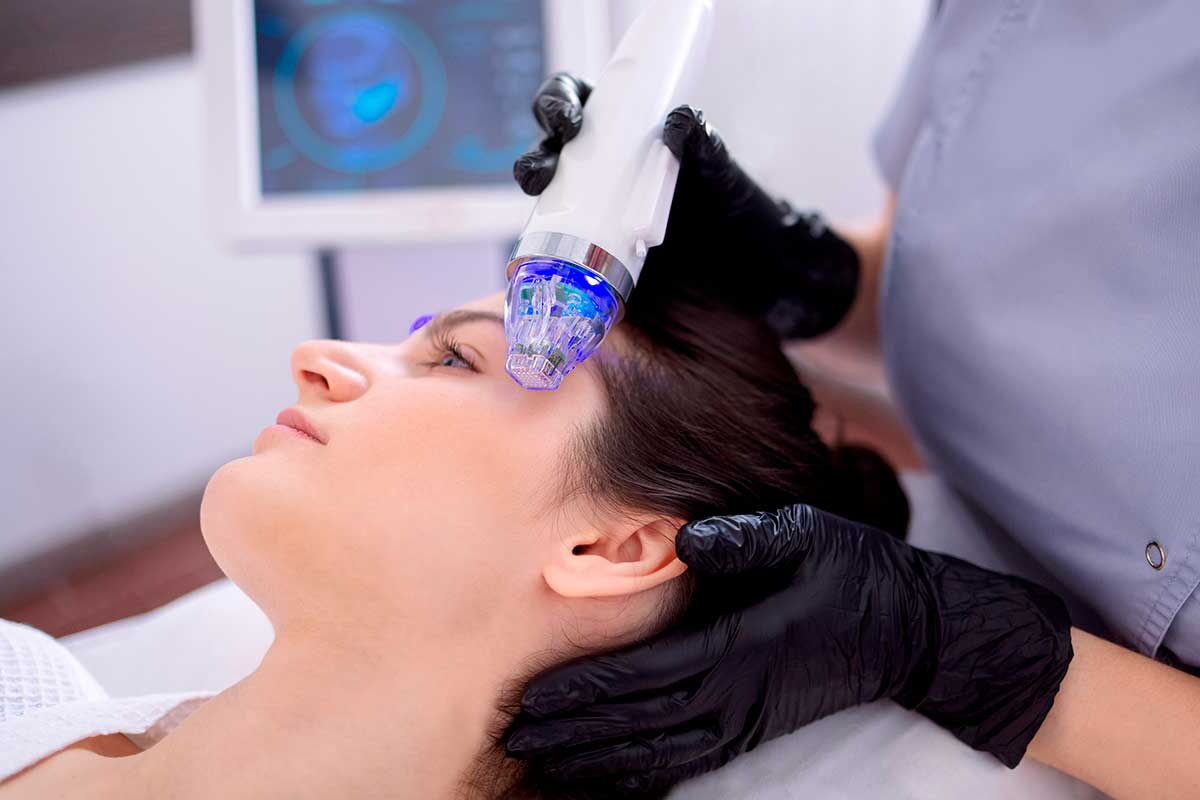Clinic Consultation, a leader in aesthetic treatments, offers radiofrequency procedures for individuals seeking this service in the city of Mansfield / TX. With a team of highly qualified professionals and state-of-the-art technology, the clinic ensures safe and effective results in improving skin firmness and texture. Clinic Consultation in Mansfield / TX is committed to providing the highest level of care and excellence, helping patients achieve their aesthetic goals with safety and confidence.
Radiofrequency in Mansfield / TX

Radiofrequency in Mansfield / TX
Radiofrequency: Everything You Need to Know About This Aesthetic Treatment
The Radiofrequency Procedure
Radiofrequency is a non-invasive aesthetic procedure that uses electromagnetic waves to heat the deeper layers of the skin. This controlled heating stimulates the production of collagen and elastin, essential proteins for maintaining firm and youthful skin. During the session, an applicator is placed on the treatment area, and radiofrequency waves are emitted, penetrating the skin without damaging its surface.
The procedure is generally painless, with patients reporting a pleasant warming sensation. Depending on the area being treated and the type of equipment used, each session can last between 20 to 60 minutes. There is no need for recovery time, allowing patients to immediately return to their daily activities. Radiofrequency is commonly used to treat areas such as the face, neck, abdomen, thighs, and arms.
Purpose of Radiofrequency
The primary purpose of radiofrequency is to improve the appearance of the skin, making it firmer, smoother, and rejuvenated. This treatment is effective in combating sagging, wrinkles, fine lines, and acne scars. By stimulating the production of collagen and elastin, radiofrequency helps enhance the skin's texture, providing a more youthful and healthy appearance.
Besides facial benefits, radiofrequency is also used on the body to reduce cellulite and improve skin elasticity. The treatment can be combined with other aesthetic techniques, such as cryolipolysis, to optimize results and offer a comprehensive approach to body rejuvenation and contouring.
Types of Radiofrequency
There are different types of radiofrequency, each with its specific characteristics. Monopolar radiofrequency uses a single electrode to send high-frequency waves into the deep layers of the skin, ideal for treating sagging and localized fat. Bipolar radiofrequency, on the other hand, uses two electrodes to treat more superficial layers of the skin, commonly used to improve texture and combat fine lines.
Another type is multipolar radiofrequency, which combines several electrodes to distribute energy more evenly, increasing the treatment's effectiveness on larger body areas. Each type of radiofrequency has its specific indications, and the healthcare professional can recommend the best option based on the patient's needs and goals.
Advantages of Radiofrequency
One of the main advantages of radiofrequency is its non-invasive nature, meaning there is no need for surgery, anesthesia, or significant recovery time. Patients can resume their normal activities immediately after the treatment. Additionally, radiofrequency offers visible and lasting results in improving skin firmness and texture.
Another advantage is the treatment's versatility, which can be applied to various body areas and combined with other aesthetic techniques to enhance results. The collagen and elastin production stimulated by radiofrequency continues to improve the skin for weeks to months after the treatment, providing long-lasting benefits.
Frequently Asked Questions About Radiofrequency
Is Radiofrequency Painful?
The radiofrequency procedure is generally painless. Patients usually feel a warming sensation in the treated area, which is comfortable and relaxing. In some cases, there may be slight redness or temporary swelling after the session, which quickly disappears.
What is the Recovery Time?
One of the great advantages of radiofrequency is that there is no significant recovery time. Patients can resume their daily activities immediately after the session. Side effects such as mild redness or swelling are temporary and disappear within a few hours.
What Are the Risks of Radiofrequency?
Radiofrequency is a safe, approved procedure with minimal risks. Common side effects include temporary redness and swelling. Serious complications are rare but may include mild burns or changes in skin pigmentation if the procedure is not performed correctly.
Who is a Good Candidate for Radiofrequency?
Good candidates for radiofrequency are individuals who want to improve skin firmness and texture, reduce sagging, and combat signs of aging without undergoing surgery. It is important to have realistic expectations about the results and follow the healthcare professional's recommendations.
How Many Sessions Are Needed?
The number of radiofrequency sessions varies according to the patient's needs and goals. Typically, 4 to 6 sessions are recommended, with intervals of 1 to 2 weeks between them, to achieve the best results. The healthcare professional will determine the ideal treatment plan during the initial consultation.
Radiofrequency is an excellent option for those seeking rejuvenation and body contouring improvement in a safe and effective manner. Consulting a qualified healthcare professional is essential to discuss options and determine if this treatment is suitable for your individual needs.